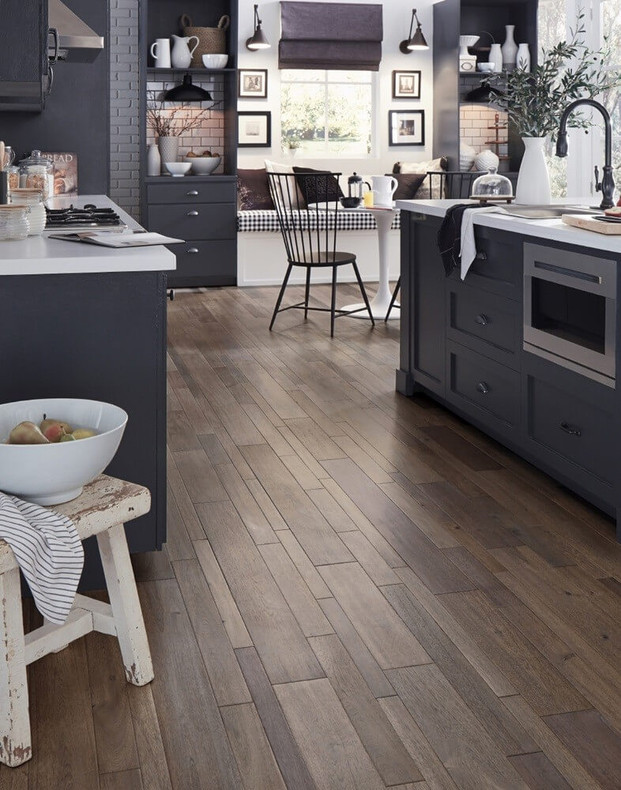
Everyone is loving hardwood floors these days. Hardwood floors are certainly more beautiful than a concrete slab and will provide style to your space. They adapt whether your style is modern, farmhouse, or even contemporary. Hardwood flooring also adds warmth and value to your home. Many will tell you hardwood floors increase the value of your home exponentially.
Having concrete in your space can feel very limiting. You may feel as though you are stuck with it or have to go with different flooring options like tile or carpet. That doesn’t have to be the case because there is a way to install hardwood flooring over concrete! Here are a few things to know about this process.
What is Your Grade Level?
The grade level is the location of your cement slab. Your slab can be above grade, on grade, or below grade which means above ground, ground level, or basement respectively. You’ll need to know which classification you have because it determines the moisture amount and whether it’s even a good idea to continue with the project. Many manufacturers don’t recommend installing hardwood flooring on concrete slabs that are below grade or basement level.
The Subfloor Under Layer
The best way to achieve hardwood flooring over concrete is by installing ¾ inch thick wood over the concrete. This underlayment will allow you to install your chosen hardwood easier. It is important to note that adding in an underlayer to your flooring will raise the floor about 1-1/2 inches. Be sure to measure accurately so this extra height does not create problems for cabinets or doorways. If this is too much, consider laminated wood flooring instead.
Minimize Moisture Migration
Concrete is porous and absorbs moisture. This can be bad when installing wood on top. Without proper drainage, your concrete slab will act like a sponge meaning it can absorb the wood and lead to rot and mold. Something that will definitely take away the beauty of your new flooring. Be sure to install polyethylene sheeting directly over the concrete. This will minimize moisture from seeping up into the flooring.
Acclimate Materials
When the flooring is delivered, it should be removed from boxes and stored in the room where it will be installed. This gives the wood time to acclimate to whatever moisture may be present. This can take anywhere between two to three days based on the manufacturers recommendations. You’ll want to be able to measure the moisture in the room so you know when the materials have acclimated properly. Without measuring, you may risk the chance of the wood warping when it has been installed.
Nail It Down
Of course you’ll need to affix your new flooring to something. Nails certainly won’t go through concrete and if they could it would be quite the workout. This is where your subfloor comes in. Be sure to properly nail the slabs of hardwood down into a plywood subfloor to install them correctly. If you choose other types of flooring, like engineered hardwood, you can glue them in place.
Ready to Talk?
When it comes to installing hardwood flooring over concrete, you don’t have to feel limited. You can use traditional hardwood flooring, engineered hardwood, or even laminate to achieve your look. When taking on a project like this, you may want to turn to an expert. They can provide you with the advice you need about what is going to work best for your home. They can answer questions, assist with your budget, and help you achieve your overall look. If you're ready to talk about new hardwood flooring, contact us.

